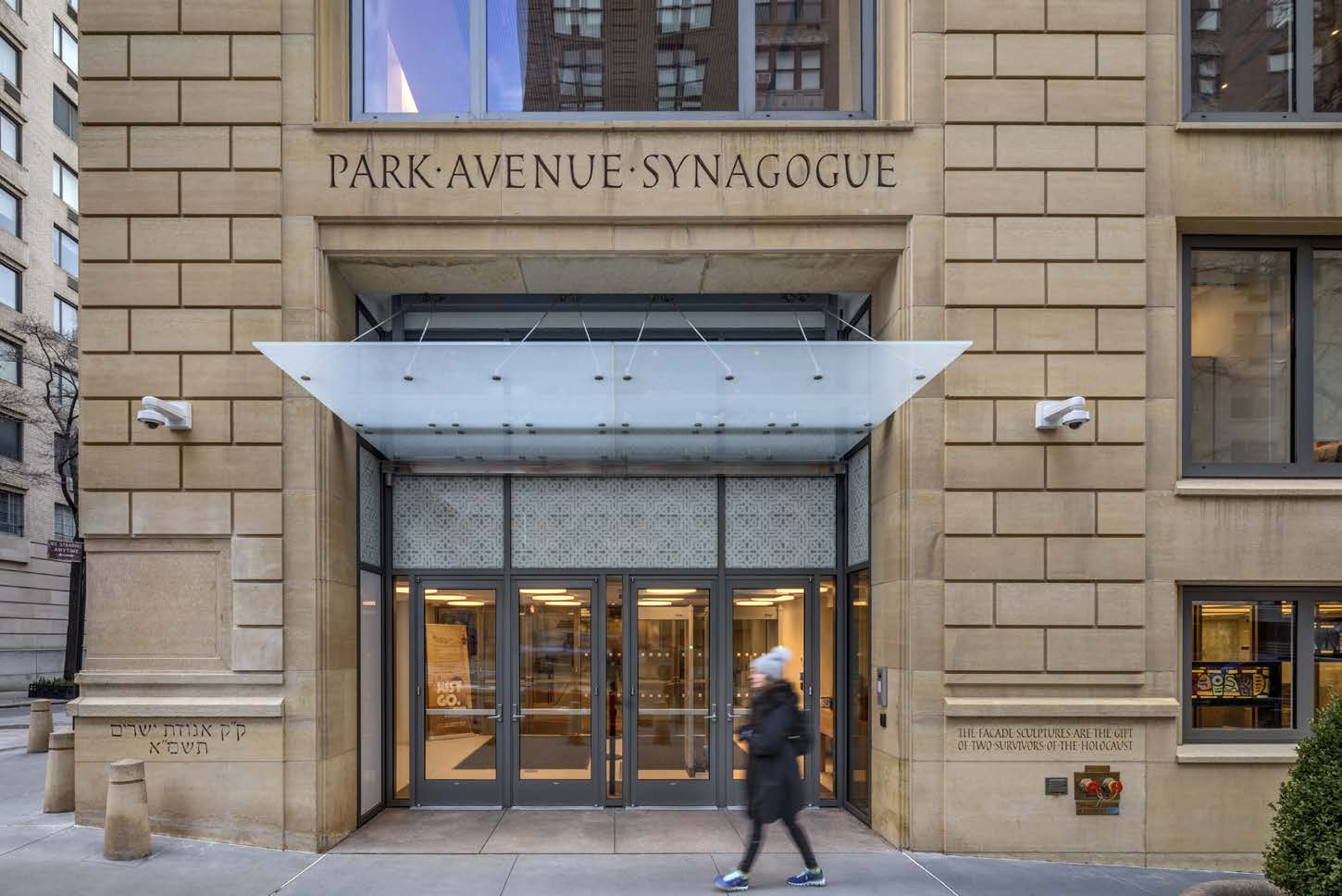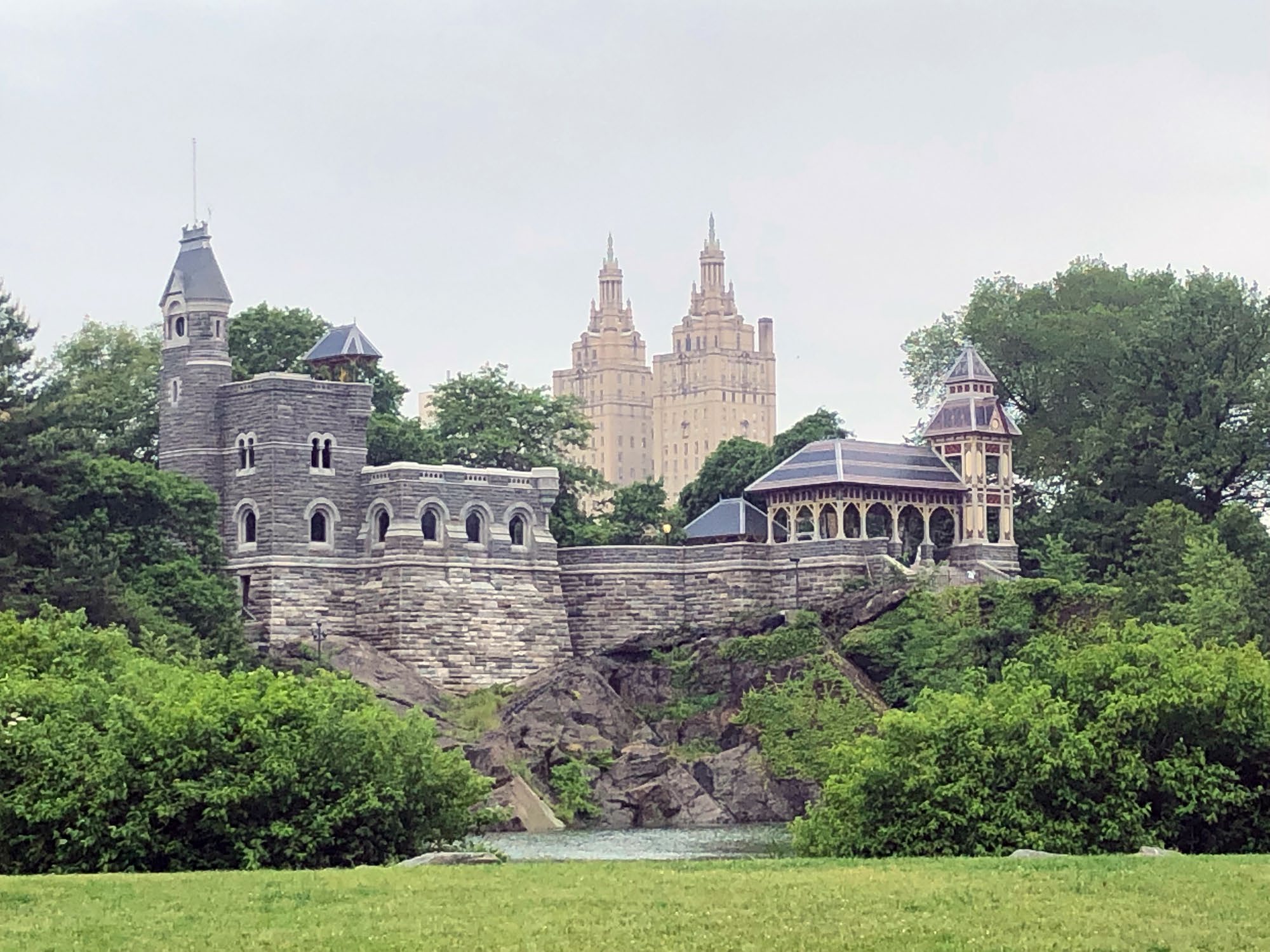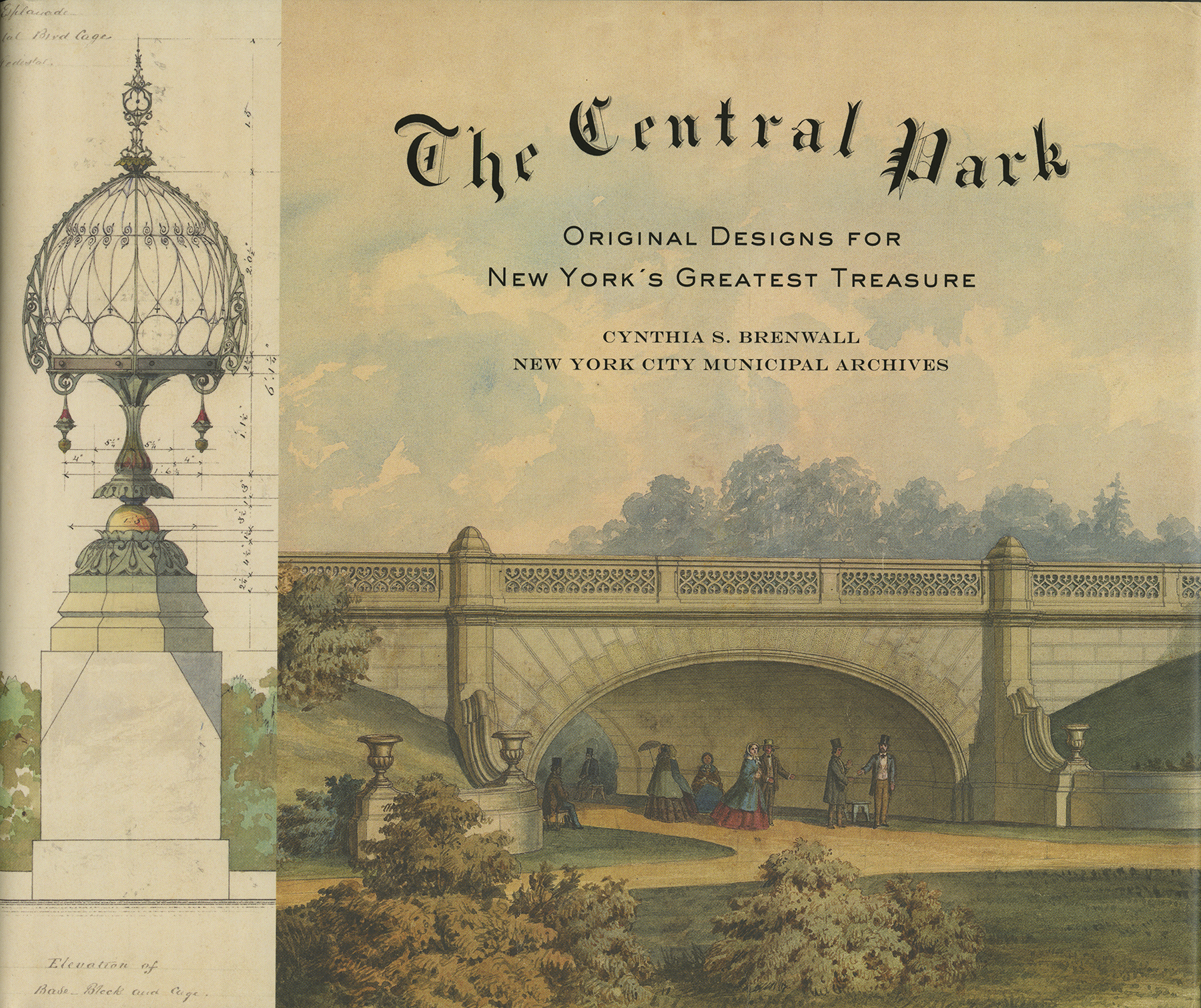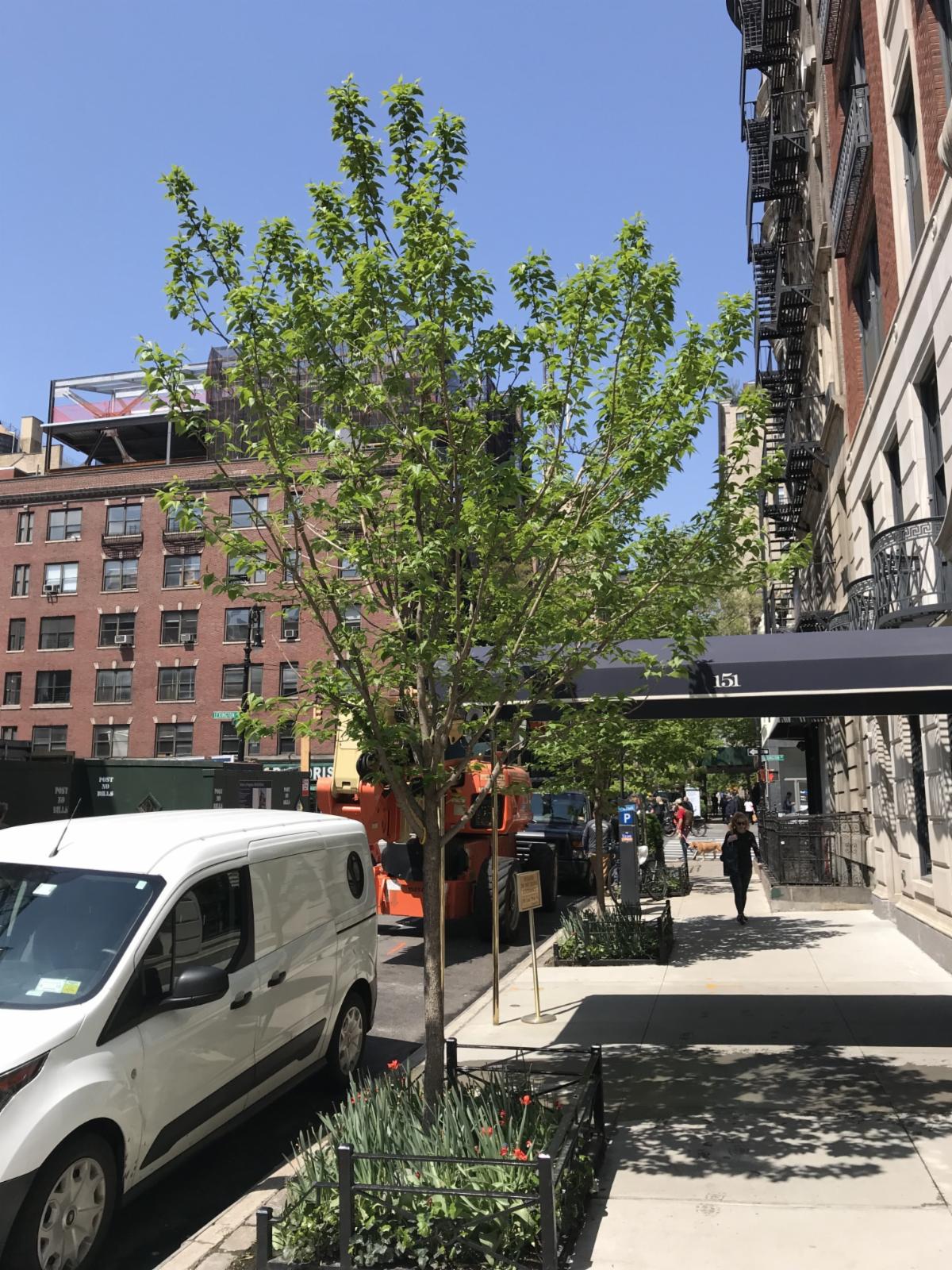For the past 36 years, FRIENDS’ members have gathered to celebrate outstanding achievement in preservation, architecture, and advocacy. This year had other plans for us, however. In light of the ongoing pandemic, we canceled our 37th Awards Ceremony scheduled for April 1st, and went to a new online model. Over the past few months we highlighted each awardee in different dedicated posts on our website, and today we celebrate them all. Scroll down to read more about what we, and our would-be presenters, have to say about the 2020 award recipients!
Congratulations to:
Renaissance Award
Park Avenue Synagogue
Presented by: Ann-Isabel Friedman
Restoration Award
Belvedere Castle
Presented by: Amy Freitag
Publication Award
The Central Park: Original Designs for New York’s Greatest Treasure
Presented by: Arete Warren
Streetscape Award
New York City Department of Parks and Recreation
Presented by: Elizabeth Goldstein
Expression of Thanks Award
New York City Council
Presented by: Kent Barwick
Good Neighbor Award
Neil’s Coffee Shop
Presented by: Hon. Nicholas Platt

Constructed for a German-Jewish Reform congregation in 1927, Park Avenue Synagogue was one of the last Moorish-Revival Jewish houses of worship to be built in the United States. The Moorish style offered an alternative to the Greco-Roman or Gothic-Revival silhouettes that were often used for churches. It was a style that had been used for synagogues in Germany as early as the 1830s and remained widely popular for Jewish sacred spaces until the First World War. With its mix of German language, Jewish religion, and Mediterranean accents, the Park Avenue Synagogue was a uniquely American place; when the Synagogue was dedicated in March 1927, Mayor Jimmy Walker, the Episcopal Bishop of New York City William T. Manning, and New York Supreme Court Justice Thomas C. T. Crain were all in attendance.
The 87th Street Synagogue House, was built in 1927 , expanded in 1954 and then again in 1980, and is the heart of the Park Avenue Synagogue campus. Last year the Synagogue completed a campus-wide renovation, with a program for the East 87th Street Synagogue House (the 1980's addition) in tandem with a newly acquired building on East 89th Street. The renovation, developed by Murphy Burnham & Buttrick Architects, provides a cohesive plan for the congregation's various needs. The 1980s post-modern structure at the corner of East 87th Street and Madison Avenue creates welcoming community spaces for the vibrant and growing congregation, while contributing to the historic character of Madison Avenue.
The Eli M. Black Lifelong Learning Center is a Neo-Renaissance townhouse built in 1912, located on 89th Street in the Expanded Carnegie Hill Historic District. The renovation of both structures have a cohesive design that both complement each historic structure and serves to connect them. Both buildings are adorned with the historic stained glass windows created by Adolf Gottlieb for Park Avenue Synagogue in the 1950s. According to MBB, "the installation creates a visual connection [between the buildings] and honors the synagogue's rich history."
You can read more about the renovation design of Park Avenue Synagogue House here, and of the Eli M. Black Lifelong Learning Center here.
New York City boasts hundreds of magnificent, historic houses of worship, but many face declining membership and daunting deferred maintenance. So, it was refreshing to be asked to introduce FRIENDS’ 2020 Renaissance Award for Park Avenue Synagogue – a thriving, growing congregation that has completed a major campus expansion and renovation. Although its historic 1925-1927 Moorish and Gothic Revival sanctuary building is not officially a landmark, Park Avenue Synagogue has been a wonderful steward, engaging skilled architects and artists to guide each expansion, in 1954, in 1980, and today. On a personal note, although my family hails from the hinterlands of the Southern Tier, my grandparents were married at Park Avenue Synagogue by Rabbi Milton Steinberg on June 13, 1936. Steinberg was memorialized in the synagogue’s 1954 expansion, distinguished by 91 whimsical, abstract “pictograph” stained glass panels, featuring Jewish iconography, some representing major holidays, by renowned abstract expressionist Adolph Gottlieb. The latest campus expansion and renovation, led by Mary Burnham of Murphy Burnham & Buttrick Architects, with Judaica artist and architect Amy Reichert, includes the relocation of many of the Gottlieb windows to more prominent locations, where they visually unify the 87th Street Synagogue House and newly acquired 89th Street Learning Center. Moreover, the holiday windows – whose meaning can be difficult to interpret – have been given explanatory text, lending not just beauty, but learning. The renovations to both the postmodern, 1980 Rita and George M. Shapiro house, and the landmarked, Neo-Renaissance, 1912 Eli M. Black Lifelong Learning Center bring a consistent modern vocabulary, light, welcoming and flexible spaces, accessibility, and cohesiveness to the synagogue campus, while respecting and maintaining the facades of the original structures.
- Ann-Isabel Friedman
Director, Sacred Sites Program, New York Landmarks Conservancy
One of Central Park’smost dramatic focal points, Belvedere Castle, underwent a comprehensive restoration undertaken by the Central Park Conservancy. Conceived as an architectural folly in original plans for the park, the castle had fallen into disrepair following its use as a weather station until the 1960s. In 2019, the Conservancy completed a comprehensive restoration that, in addition to recreating long-ago lost elements of the original design, addressed the unique challenges of a building that was constructed as open air pavilion in the form of a miniature gothic castle.
The masonry restoration addressed the pervasive water infiltration that has long impacted the castle's structure and will guarantee the building's longevity. Both the main terrace and the Belvedere's wood pavilions were restored in accordance with the castle's original drawings. The paving of the main terrace now includes contrasting tones of bluestone in a checkerboard pattern, and the wood pavilion at the northwest corner now has a recreated tower element.
The most transformational aspect of the restoration is the new windows. When constructed, the castle was an open air pavilion with no windows frames to obstruct the visitor's view. The previous windows were replaced with clear-pane glass, making the views from within once again unobstructed.
I have had the pleasure of working with the outstanding Central Park team, especially Chris Nolan and Lane Addonizio for many years and I know firsthand their deep knowledge and fidelity to Olmsted’s timeless design. Restoring, designing, and operating Central Park, one of the most famous historic landscapes in the world, is the most challenging, scrutinized undertaking anyone can imagine. This team, now led by the impressive and unflappable Betsy Smith, has conquered not only the highest mountain (literally the highest elevation) but one of the most iconic views of this beloved park, making it more welcoming and accessible than ever before. Chris deserves particular recognition for his mastery of not only Olmsted’s vision for Central Park, but his willingness to take on every challenger, attend every public meeting, respectfully respond to every question and objection. To his tremendous credit, he recognizes the heat of the opposing view comes from the same passion that has driven him as the lead landscape architect of Central Park for two decades. Quality, integrity, and tremendous perseverance is what a project like Belvedere requires, and the Central Park team has that unlike any other.
- Amy Freitag
Executive Director, The J.M. Kaplan Fund
Central Park might be the most famous and best loved example of pastoral landscape architecture in the United States, but for Upper East Siders, it is also our brilliant backyard. If you’ve ever wondered how our extraordinary emerald oasis became a reality, The Central Park: Original Designs for New York's Greatest Treasure is where you'll find the answers. The book offers a more complete understanding of the development and early history of Central Park than ever before, providing a lush look at the park’s creation, illustrated by early examples of Olmsted and Vaux’s extraordinary vision.
The book by Cynthia Brenwall, a conservator with the New York City Municipal Archives, pairs the City’s remarkable collection of original drawings for park features large and small (from complete buildings to intricate, technical drawings for tree grates) with a detailed historical account of the park’s creation. Many of the 250+ color photos, maps, plans, elevations, and designs were published for the first time in this volume, and reveal the meticulous attention to detail by Olmsted, Vaux, and the many other players discussed in the book, that went into planning Central Park.
Is it happenstance that the hero in The Central Park is not one man whose genius of the place is always on the tip of everyone’s tongue, but indeed many heroes - those who drew, designed, engineered and built those buildings and bridges, follies, balustrades, waterfalls, roads and invisible infrastructures et cetera which punctuate and define the landscapes every turn?
The names of these players unfold in a plot which takes place over a period of decades from 1858 to present; they disappear and then return ten years later: yes, there is Frederick Law Olmsted but what about the men whose visions advanced and articulated Olmsted’s dreams besides their own? Calvert Vaux, Jacob Wrey Mould, Samuel Parsons, Ignaz Pilat, Julius Munckwitz, Egbert Viele and William H Grant and the many draftsmen whose command of the Beaux Arts vernacular predates any American’s enrollment in the prestigious Ecole des Beaux Arts decades later. The Central Park at times reads like a novel, commands our attention with art historical nuances and provides us all with an invaluable and refreshing account of what we think we know but tells us that there is much to learn, and in no small debt to the author’s knowledge of the Municipal Archives collection of 1500 Central Park drawings.- Arete Warren
Historian of Art and Architecture and FRIENDS Board Member
The livability of our neighborhoods goes well beyond the aesthetics of our buildings. So much of our neighborhood character comes from the very lively streets, full of local shops and people. It is essential that the public space that connects us to our community is an inviting and pleasant one, especially in a city as dense and busy as New York.
Over the past few months we have noticed a greater number of new trees popping up in our neighborhood - including one right next to FRIENDS' office. The new trees come with a "I'M YOUR NEW TREE" tag, containing information about the tree's species and a QR code for additional information about how to care for the street's newest addition.
During Fiscal Year 2019, the New York City Department of Parks & Recreation planted 78 news trees within Community Board 8, and their database show another 200+ locations that will welcome new trees in the future. Do you want to find out if a new tree is coming to your street? Check the NYC Department of Parks & Recreation tree planting map here.
In a city as dense as New York, street trees can be the difference between a gracious, dynamic sidewalk and a hard, uninviting streetscape. They are the lungs of our city, and unlike the average traffic light or hydrant, this urban forest needs careful, ongoing tending. In neighborhoods across the five boroughs, NYC Parks plays the role of neighborhood gardener, acting as a steward to our more than 692,892 street trees. But the ones each New Yorker feels most passionate about are those that shade and enliven the blocks they call home. That makes the addition of 78 new trees to Upper East Side streets (and 200 more to come!) truly worthy of celebration. Congratulations to NYC Parks for the 2020 Streetscape Award. And thank you to the FRIENDS of the Upper East Side Historic Districts for recognizing this valuable contribution to New York life!
- Elizabeth Goldstein
President, The Municipal Art Society of New York
In May 2019, the New York City Council voted to amend the Zoning Resolution to cap exempt mechanical void space within new buildings in residential neighborhoods. This ruling is a small but powerful step towards closing commonly-abused “loopholes” and restoring predictability to new construction.
Resolution No. 916, limits the height on exempt mechanical spaces to 25 feet, or about twice the height that will reasonably accommodate residential mechanical equipment, and determines that such spaces must be spread at least 75 feet in height from one another. Though the 25 foot threshold is generous, it is far more reasonable than the empty spaces exceeding 100 feet within new buildings that do nothing to provide community benefits, affordable housing, or an adequate number of units to address the city’s rapidly increasing population.
It is important to note that this zoning text amendment will only cover enclosed mechanical voids in buildings within Manhattan’s highest density residential districts (R9 and R10 and equivalent). While a powerful step, the scope of this legislation is quite narrow and focuses only on certain voids in certain districts. It will also not comprehensively address such other loopholes as the lack of a codified minimum lot size that prevents developments from evading zoning requirements, or using mechanical voids in commercial districts. However, it is an important first step and “foot in the door,” so to speak, toward the implementation of future measures to ensure predictable growth and protecting the livability of our city.
The Council's vote provided another tool to protect the character of our neighborhoods. Click here to read more about what the amendment does to keep out of scale development in check.
New Yorkers deprived of many aspects of life during the bleak and unsettling days of the virus have a renewed appreciation for the fresh air and the sunlight that endow our streets and public spaces. In most of the world sunlight and air are taken for granted but in New York they have been preserved only through the diligence of citizens and from time to time the intervention of enlightened public officials. 100 years ago the skyscraper was born (made possible by the development of steel skeleton frame construction and the invention of the elevator). New York was thrilled by the possibilities but quickly realized that without some kind of controls our streets would be cast in perpetual gloom. The City government responded and adopted the pioneering controls of the first Zoning Resolution to preserve the basic amenity of air and light so essential to human life. Over the last century there have been many skirmishes pitting the energy and ingenuity and political influence of developers against citizen protectors. It's doubtful the battles will abate (this after all is New York, ever restless and famous for only one continuity, the certainty of change).
But this year there is something to celebrate. The New York City Council recognizing that a heretofore unknown or at least unexploited zoning loophole excluding space defined as "mechanical" was creating a wave of sun-blocking skyscrapers of unprecedented height solely for the purpose of adding value to penthouse views. Resolution No. 916 is not a household word but it is the first and a good beginning to curb a reckless and unjustified assault on the sun. FRIENDS salutes the Council for taking this pioneering step (and is especially grateful to our local Council Member, Ben Kallos for his leadership). Therefore, though socially distanced, we raise a glass to the Council for your hard work and courage. Thank you! May the sun shine upon you as you continue work to guard against the shadows that needlessly threaten our streets in neighborhoods across the City.
- Kent Barwick
Former Chair, New York City Landmarks Preservation Commission
Neil’s Coffee Shop, sits at 70th and Lex, right across from the FRIENDS office. This stalwart neighborhood diner was founded in 1940, and has the original neon sign to prove it. You’ll also find Roosevelt-era interiors complete with the original decorations. Cristo Kaloudis, the current owner, arrived in New York City during the 1960s from the island of Chios and purchased the diner from Neil himself in 1980. While most of the decoration has remained unchanged from the first owner, the coffee shop's menu has been steadily accommodating changes in dining fashion, and you now can find avocado smoothies on their massive and eclectic menu, alongside 29 different preparations of eggs!
Many businesses on the Upper East Side, just like Neil's, are family-owned, and have been passed down for generations. These small mom and pop shops lend individual character, neighborly warmth, and historical continuity to our community. As an organization committed to preserving the architectural legacy, livability and sense of place of the Upper East Side, FRIENDS knows that so much of that neighborhood character comes from the hard work and persistence of local business owners like Kaloudis and his son, Nick, who now runs most of the diner's business.
Neil’s Coffee Shop, fixed on the corner of 70th and Lex for the past eighty plus years, daily welcomes a full range of Upper East Siders. Retired ambassadors, Asia Society staffers, Hunter College students, local doormen, delivery people, Park Avenue dowagers and their grandchildren all join to pack the booths and the counter. Lured by good food, reasonable prices and quick, friendly service, they rapidly become regulars. “‘Meet me at Neil’s” is the neighborhood refrain.
Chris, the Greek owner who bought the place in 1980 has provided continuity through forty years of change in the city. His son Nick, now in charge, will guide it through the current COVID turmoil and beyond. The lease permits no change in decor, guaranteeing the that Neil’s looks like the diners of my childhood, warts and all. The menu has something for everyone, a variety so impressive that New York Magazine rented the entire place one day last year, ordered every dish on the menu and put them on the counter. The wide photograph (a copy of which is in the window) featured as the centerfold for an issue of the magazine in 2019.
The atmosphere is busy and collegial. I found myself serving on jury duty with the head waiter some years ago and we have been friends ever since. Things slow down on Sunday, when regulars linger over brunch with the newspaper. Neil’s is a special place and an important institution that binds our neighborhood together.
- Hon. Nicholas Platt
Former United States Ambassador











